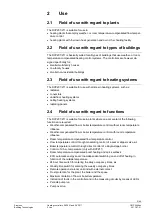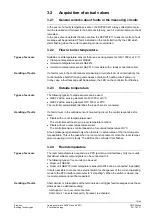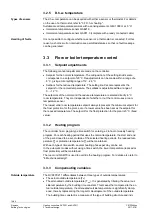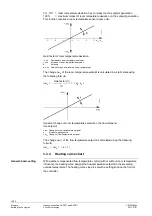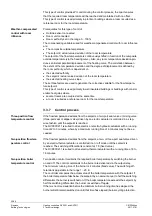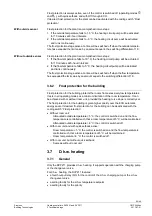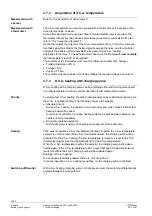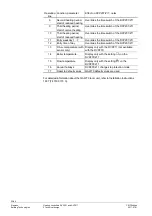
23/46
Siemens
Heating controllers RVP201 and RVP211
CE1P2464en
Building Technologies
3 Technical design
2017-07-21
3.5 ECO automatic energy saver
3.5.1 Fundamentals
The ECO automatic energy saver controls the heating depending on demand. It takes
into account the building construction-dependent behavior of the room temperature
when the outside temperature changes. If the amount of heat stored in the building is
sufficient to maintain the current room temperature setpoint, the heating will be shut
down (mixing valve closes or burner off, heating circuit pump off).
In the RVP201/211, the ECO automatic energy saver is subdivided into two part func-
tions. ECO function 1 is used predominantly in the summer while ECO function 2 re-
sponds primarily to short-term temperature variations and is therefore active during
intermediate seasons.
Operation of the ECO automatic energy saver is dependent on the operating mode:
Operating mode
ECO
Automatic mode
Fehler! Es ist nicht mög-
lich, durch die Bearbeitung von Feldfunk-
tionen Objekte zu erstellen.
Active
Automatic mode
Fehler! Es ist nicht mög-
lich, durch die Bearbeitung von Feldfunk-
tionen Objekte zu erstellen.
Active
Normal mode
Fehler! Es ist nicht möglich,
durch die Bearbeitung von Feldfunktionen
Objekte zu erstellen.
Inactive
Setback mode
Active
Protection mode
Active
Manual operation
Fehler! Es ist nicht mög-
lich, durch die Bearbeitung von Feldfunk-
tionen Objekte zu erstellen.
Inactive
D.h.w. heating only
(only with RVP211)
Inactive
ECO automatic energy saver active means:
Seat or slipper valve closed or burner off
Heating circuit pump switched off (it can only be activated by frost protection for the
plant)
Owing to the ECO automatic energy saver, the heating operates only or consumes
energy only if really required.
If desired, the ECO automatic energy saver can be deactivated.
3.5.2 Compensating and auxiliary variables
Also refer to "3.3.3 Compensating variables".
The ECO automatic energy saver necessitates an outside sensor. As compensating
and auxiliary variables, it takes into account the development of the outside tempera-
ture and the building's heat storage capacity. The following parameters are considered:
the building's time constant
the actual outside temperature (T
A
)
the attenuated outside temperature (T
AD
). Compared to the actual outside tempera-
ture, the attenuated outside temperature is significantly dampened.
This ensures that no heating will be provided in the summer by making certain that
the heating will not be switched on during a few cool days
Note

